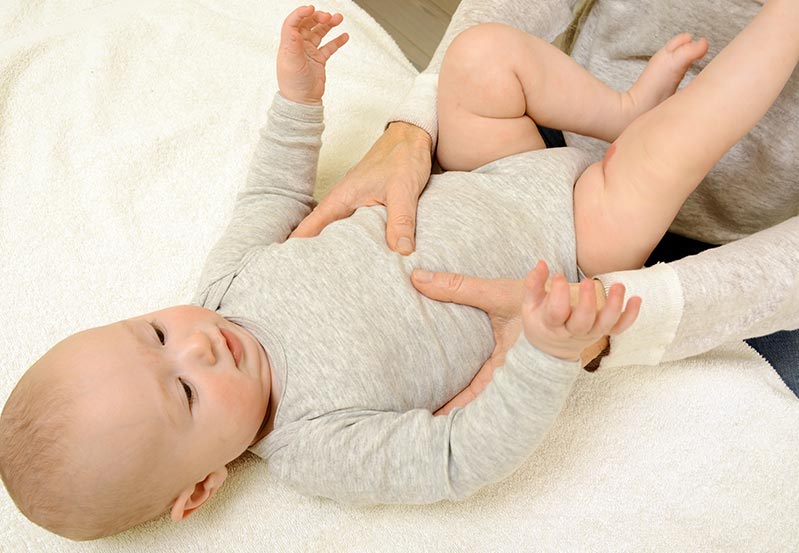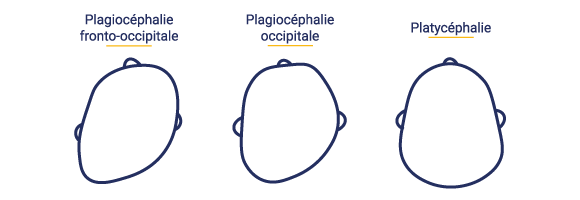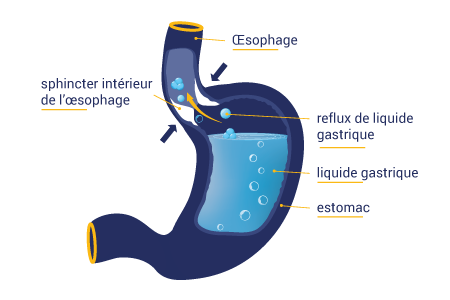
Osteopathy and children
During childbirth, your child experiences strong pressure that sometimes affects the mobility of the bones of the skull and spine.
They can cause immediate or delayed functional disturbances such as torticollis of the infant, cranial asymmetry (plagiocephaly), blocked lachrymal canal ...
An osteopathic examination will allow us to check the balance between your child's bone, organ and muscle systems.
Because of its gentle approach, pediatric osteopathy is an ideal method for the treatment of infants.
A report is recommended in the first three months..

Osteopathy and children
During childbirth, your child experiences strong pressure that sometimes affects the mobility of the bones of the skull and spine.They can cause immediate or delayed functional disturbances such as torticollis of the infant, cranial asymmetry (plagiocephaly), blocked lachrymal canal ...
An osteopathic examination will allow us to check the balance between your child's bone, organ and muscle systems.
Because of its gentle approach, pediatric osteopathy is an ideal method for the treatment of infants.
A report is recommended in the first three months.
The child :
Childhood is the period when the structures of the future adult are developed. From the age of the first steps, to that of schooling, osteopathy is a supportive medicine that helps the psychomotor development of the child.
Every physical activity can generate static disorders.
The weight of the schoolbag, often overloaded, a dental device, the practice of an intensive sport, are just some of many examples.
Regular consultations provide definite help at every stage of growth.
When to consult?
• if your baby is born prematurely, by caesarean section or by seat,• the skull deformed by the use of forceps or suction cup,
• if it presents difficulties during suction,
• signs of congenital torticollis: he always turns his head to the same side.
But also for
• Screening for plagiocephaly in the first three months of life (cranial deformity)
They are more or less visible and sometimes can go as far as creating a facial asymmetry. Early management is important. Plagiocephaly can be positional (occurs as a result of poor infant posture resulting in prolonged pressure on one side of the head against the mattress) or craniosynostosis (premature suture of a cranial suture). Manual therapy is used to manage positional plagiocephalias.

• Infant Colic and Transit Disorders
It is quite common to consider that a crying infant has colic and that these colic are "normal". In general, colic is described as recurrent and regular crying attacks in a baby. They take place at least 3 hours a day, 3 days a week, for more than a week. Seizures usually occur at the same times of the day, usually late in the afternoon or evening.
They are transient and spontaneously stop around three and a half months.
• Constipations
• Sleeping troubles
They are complex because they are multifactorial. An infant or toddler with multiple reasons for having trouble sleeping.
• Growth monitoring (scoliosis, growth apophysite, sprains ...)
• Gastroesophageal reflux or GERD :
Gastroesophageal reflux is the involuntary rise of gastric contents in the esophagus.
This reflux most often reaches the pharynx and then the mouth and then results in regurgitation. The rejection of milk by the mouth is spontaneous, occurs without effort and can occur during a rot.
It is not accompanied by muscle or abdominal contractions, unlike vomiting.
Regurgitations often appear before the age of 3 months. They usually occur after meals and are favored by liquid feeding, changes of position and compression of the abdomen.
They are more or less frequent and of variable volume but they can be abundant.
In newborns and infants under one year of age, gastroesophageal reflux disease (GERD) is a common and minor phenomenon.
Regurgitations occur in almost two thirds of children aged 4 to 5 months. They concern only 5% of children aged 10 and 12 months, period of acquisition of standing posture and walking.

There are two types of gastroesophageal reflux :
- Simple GERD is the most frequently encountered case: it is not serious. It is a benign condition of the baby that heals spontaneously with the acquisition of the standing position.
Regurgitation is well tolerated. Even if the baby regurgitates, his appetite is preserved. It grows well and grows steadily. - GERD complicated with oesophagitis: it is much rarer in infants. The acidity of regurgitation causes inflammation of the lining of the esophagus or esophagitis.
Annoying symptoms appear: ceaseless crying, refusal of food, weight loss, great agitation during or after taking baby bottles or during sleep.
Profile : baby craves his bottle, devours him in big gulps, stops before he finishes screaming, regurgitates and cries after feeding his bottle sometimes writhing for hours. He may ask to suck without stopping, he will tend to arch, push his head back.
• ENT disorders (chronic otitis, recurrent sinusitis) from infants to children
Osteopathy can improve the drainage quality of sinuses and Eustachian tubes (which connect the ear to the cavum behind the nose).
This drainage is important to avoid fluid stagnation and therefore infection in the ear and sinuses (respectively infectious otitis and sinusitis).
• Clogged lacrimal canal
This results in recurring conjunctivitis, the eye flowing frequently and getting stuck when baby awakens.
• The first steps with screening for gait disorders
Walking is an important stage of development, it occurs around 11-18 months, sometimes earlier, sometimes later.
